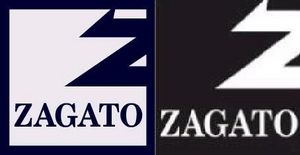.
Zagato
Zagato (SZ DESIGN s.r.l.) is a design consultancy and engineering services company situated just outside Milan, Italy. The company's premises occupy an area of 23,000 square metres, of which 11,000 square metres are covered.
The company was established at the end of the World War I by Ugo Zagato, putting aircraft industry construction techniques to use in the expanding market for passenger vehicles.<ref name="concept">conceptcarz.com</ref> Zagato's cars were advanced in design and became synonymous with light weight and excellent aerodynamics. Alfa Romeo, Fiat and Lancia immediately realised the advantages of his rakish, streamlined designs. A collaboration followed which saw the creation of a series of legendary racing cars, such as the Alfa Romeo 1500, then the 1750 Gran Sport, and the 2300 8C. After World War II, Zagato was very much active in the new GT new racing category<ref>zagato.it</ref>. Avant-garde styling, together with light weight and wind-cheating lines were main features of Zagato's models for the leading sports car manufacturers of that era - Maserati, Alfa Romeo, Fiat, Lancia, Abarth, Ferrari, and Aston Martin. In addition to cars that have been produced officially in small series, the company has also built exclusive one-offs and prototypes for other illustrious marques, such as Ford, Jaguar, MG, Rover, Volvo, Bristol, and Rolls-Royce.
Ugo Zagatos two sons Elio Zagato (1919-2009) and Gianni Zagato (born 1929) got involved in the late 1940s. Ugo passed away in 1968.
Currently, Zagato is headed by Andrea Zagato.<ref name="concept"/>
Vehicles
- Diatto Ottovu
- Bentley GTZ Zagato Concept
- Aston Martin DB7 Zagato
- Maserati A6G Zagato
- Ferrari 575 GTZ
Trivia
- In the anime Magic Knight Rayearth, the main villain is High Priest Zagato.

